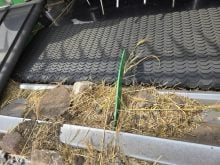An organization looking to boost the value of the mustard industry has laid out its spending priorities to mustard growers, who will help fund the effort through their checkoff.
Mustard 21 Canada Inc., a non-profit corporation set up last year by industry groups, is hoping to raise and spend a total of $15 million by 2016 on research projects designed to add value to mustard production.
Producers will provide some of that funding through the checkoff they pay to the Saskatchewan Mustard Development Commission.
But M21 project manager Peter Desai says growers will be getting a good return on their investment.
Read Also

Saskatchewan looks to expand trade in Indonesia
Saskatchewan intends to increase its agricultural partnership with Indonesia.
“Our goal is to increase the value of the mustard industry to $500 million from its current level of around $100 million,” he told mustard growers attending the annual meeting of the SMDC.
He said the return on investment for producers will come in several forms: new germplasm for high yielding, high quality varieties, new food and industrial products, better weed control, and making sure mustard is competitive with other crops and continues to a useful part of rotations.
“The goal is to create more wealth by adding value to mustard production,” he said.
Mustard 21, which was set up in 2007, became a non-profit corporation last year. It receives funding from the SMDC and Canadian Mustard Association, along with the federal and Saskatchewan governments and a number of industry partners.
Its annual budget is approximately $1 million, but Desai said he hopes that can be increased to around $1.8 million over the next few years.
“As time goes by and you get closer to having legislation or new regulations, you need more money,” he said in an interview after his speech.
Desai told growers M21 has four spending priorities.
At the top of the list is funding breeding programs to develop new high yielding high quality varieties, hybrids and new weed control options. That will account for 40 to 45 percent of M21’s spending.
“We need to have an assured supply of a high quality product,” he said.
Next on the list is the development of industrial mustard varieties, to be used for the production of such things as a biopesticide from mustard meal, and biodiesel additives and lubricant from mustard oil. That will account for 20 to 25 percent of the spending.
A similar amount will be devoted to identifying and evaluating new weed control options, a major production issue for mustard growers.
About 10 to 15 percent will be spent on developing mustard meal as an anti-microbial agent for processed meat and perishable foods.
Desai said M21 can be the conduit to take information from producers and end-users and merge it together into a strategy that benefits both.














